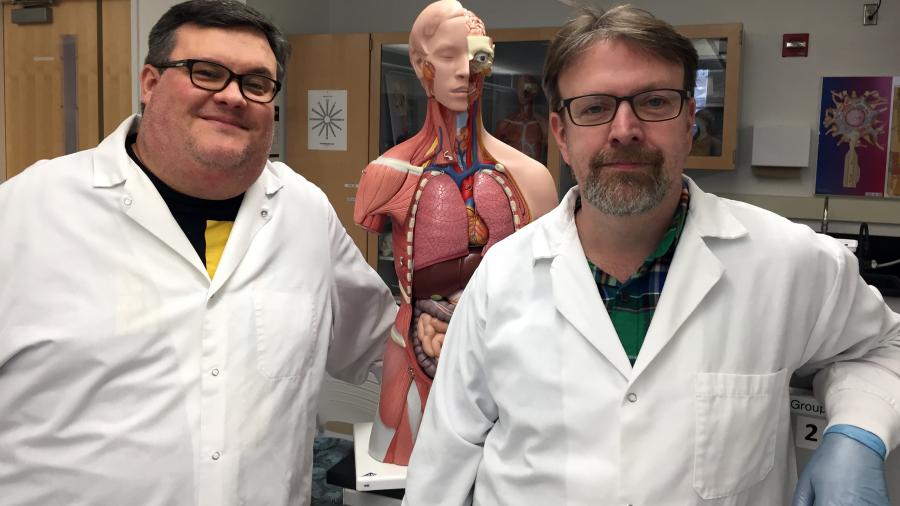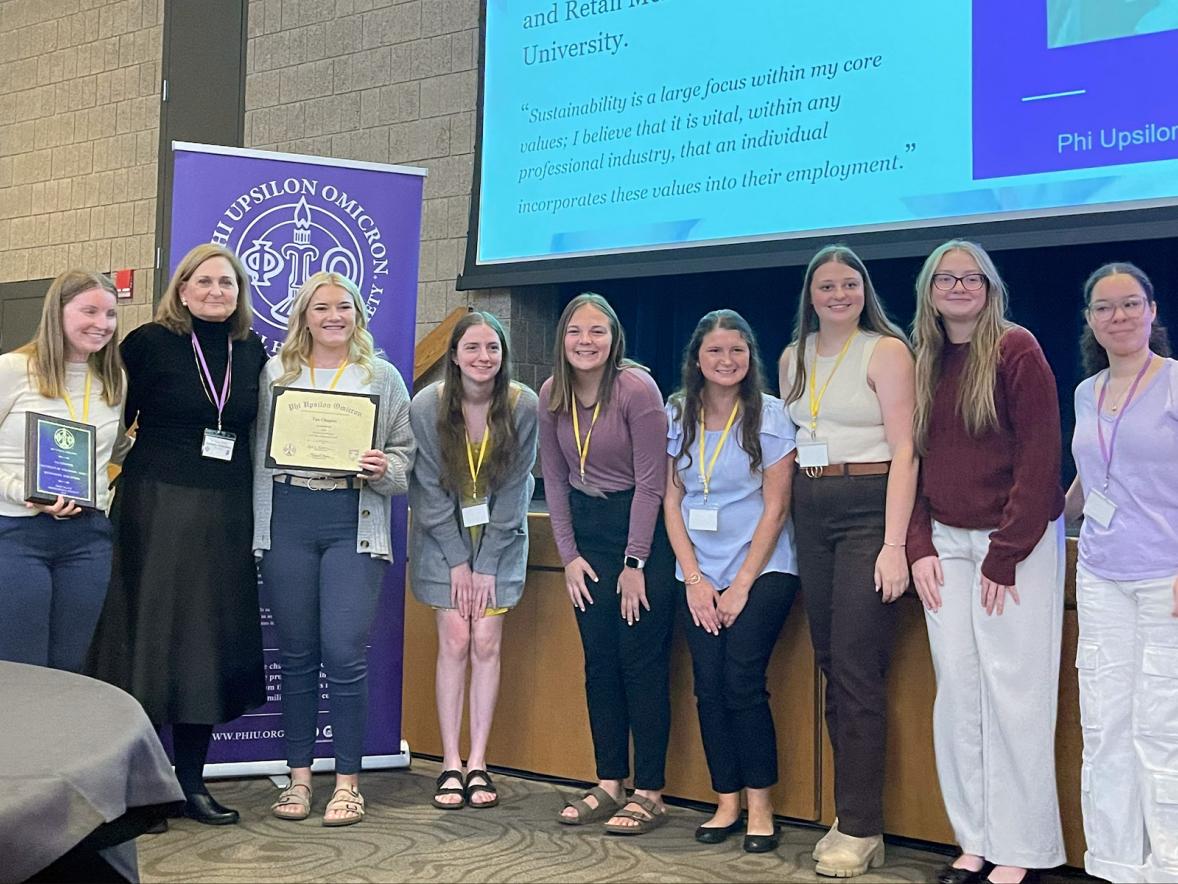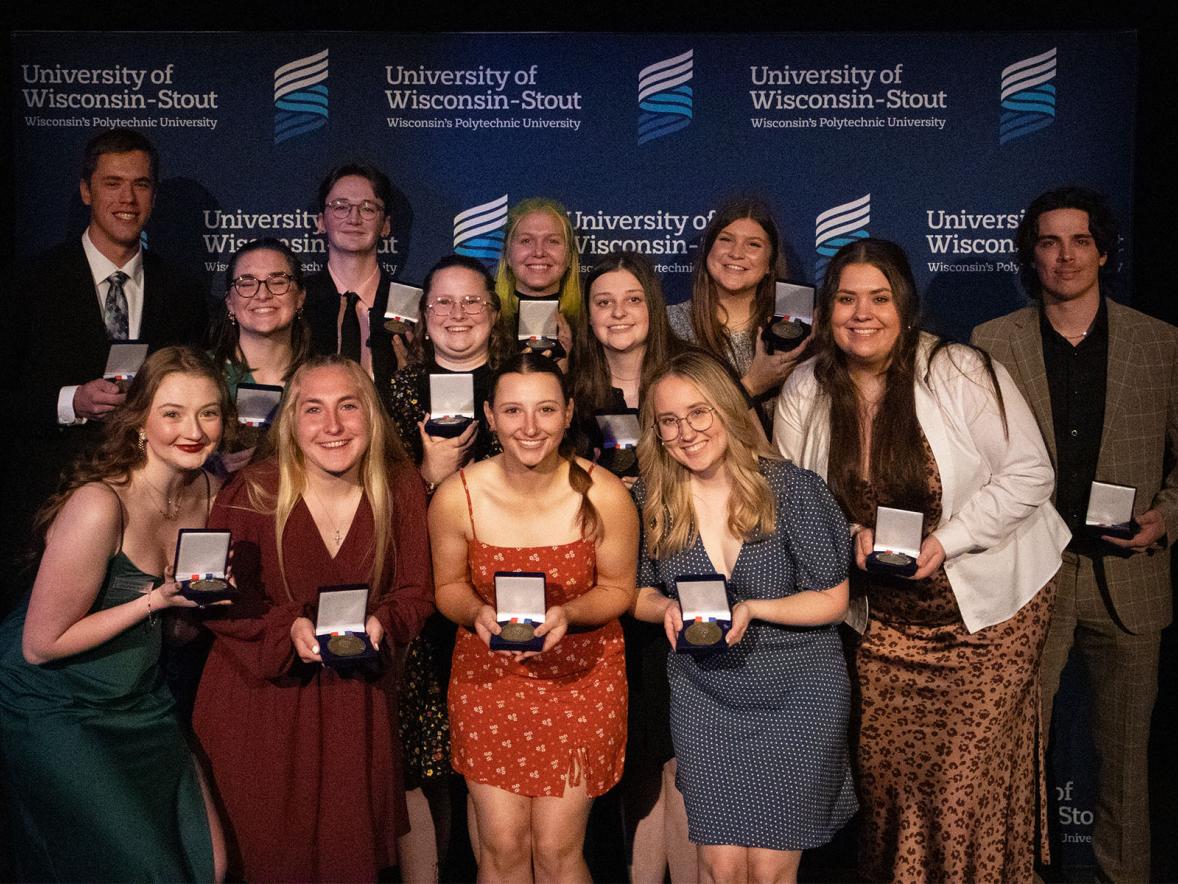
Local criminal lawyer Charles Huff knew he needed to learn more about the human body and potential fatal wounds as he researches a book he is co-authoring.
Huff and Charles Conley, a writer from Minneapolis who also teaches writing at the University of St. Thomas and the Loft Literary Center, recently visited the cadaver lab in University of Wisconsin-Stout's Jarvis Hall Science Wing to get a quick course in anatomy from Dr. Alex Hall, an adjunct faculty member in the biology department and staff physician. Hall illustrated what types of injuries to the human body are likely to be lethal.
Huff and Conley are researching a book they plan to write on the Ripper Crew, a group of four men who abducted, mutilated and killed as many as 18 victims in the Chicago area in the early 1980s. One of the men, Thomas Kokoraleis, is slated to be released from prison as soon as he finds a place to live that complies with Illinois’ rules for convicted sex offenders.
Huff and Conley are also researching ties between the Ripper Crew and serial killer John Wayne Gacy Jr. Gacy sexually assaulted, tortured and murdered at least 33 teenage boys and young men between 1972 and 1978 in Cook County, Ill. The leader of the Ripper Crew, Robin Gecht, who is imprisoned with a tentative parole date of 2042, once worked for Gacy, Huff said.
“It is just incredible the odds that one serial killer employed another serial killer,” said Huff, who is a partner in the Menomonie law firm Mayer and Huff and has 19 years of legal experience.
Huff said it was “nauseating” what the Ripper Crew and Gacy did to their victims, but he and Conley needed to better understand the anatomy of the human body and the wounds inflicted on their victims in order to write the book.
“Alex was super,” Huff said. “She gave us a lot of insight into the human body we would not have known without talking to a professional. Alex was able to demonstrate, using a cadaver as a visual aid, what the murderers were doing.”
Huff, a Chicago native, said he has been in a few labs with cadavers.
“Alex knows her stuff really well and was able to give us a crash course from skin down to the liver and all the organs,” Huff said.
Conley said he was a little apprehensive about going to the lab.
“I wasn’t sure how I’d react to a dissected cadaver in the flesh,” Conley said. “Alex is such a pro. She had me focusing all my attention on the function of the different organs and the structure of the human body before my imagination could run away with me.”
Hall said this was her first demonstration to writers for a book. Usually she works with anatomy and physiology students from local high schools or other colleges or health professionals.
She talked with Huff and Conley about the basic organizational structure of the body.
“We are a tube within a tube within a tube,” Hall said, “the inner tube being your inner organs, which is then surrounded by a tube of muscle and bone, finally surrounded by a tube of skin. These three layers are only lightly attached to each other for most of the body. We reviewed what types of injuries are likely to be lethal, and why, given the physical arrangement of life-critical systems such as the windpipe, major blood vessels, heart and brain.”
Because UW-Stout is a public university, it has a mission to serve all state citizens, not just enrolled students, Hall said.
“We are so fortunate to have a cadaver facility here, as that’s a resource not available even on most college campuses,” Hall said. “So, it’s incumbent upon us to share this incredible resource with the community as much as we can, as it’s such a gift to have it. It is so powerful to be able to see actual, real human anatomy. It’s something that no plastic model or color-coded diagram can match. The body donors have given us such an incredible gift, so we try to share that in as many meaningful and appropriate ways as we can.”
Conley and Huff plan to write the book later this year.
Huff said he became interested in the Ripper Crew after he learned an acquaintance’s family member was one of the killers’ victims.
They also found only one book had ever been written about the Ripper Crew. Huff felt more of the story should be told.
“What an injustice this was that these people went through these things and it was not in the press a lot,” Huff said. “Now one of them is going to get out.”






